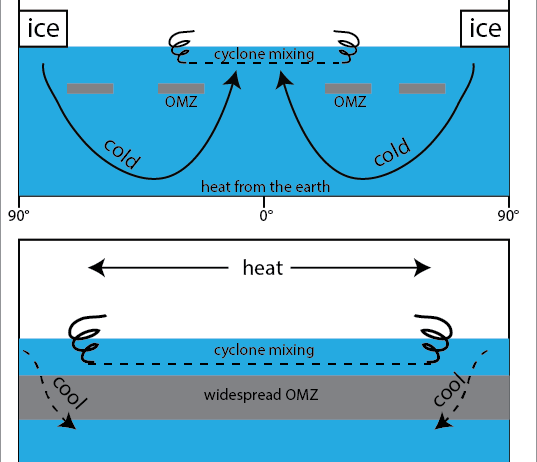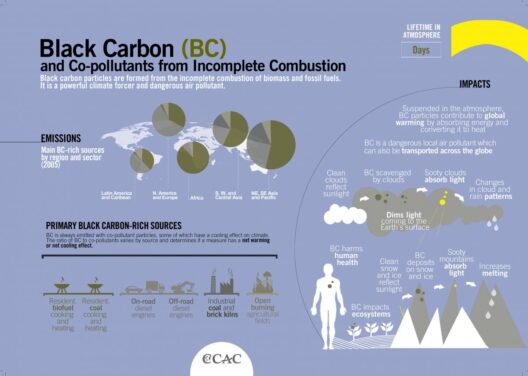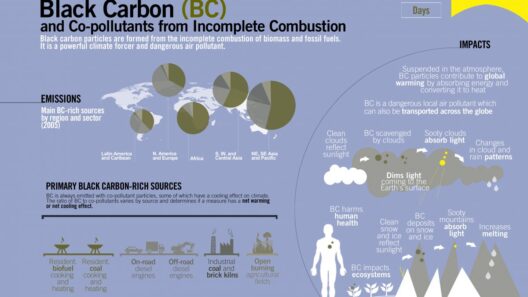Ocean salinity, often referred to as the saltiness of seawater, serves as a critical parameter in understanding the complex dynamics of marine ecosystems. As global warming accelerates, changes in ocean salinity are becoming increasingly pronounced, leading to profound implications for climate systems, marine life, and even human societies. This exploration of how global warming alters ocean salinity uncovers not only observable phenomena but also the deeper, interconnected networks of our planetary health.
Salinity levels in the oceans are influenced by various factors, including evaporation, precipitation, river runoff, and the melting of polar ice. Traditionally, areas near the equator, where high temperatures cause significant evaporation, exhibit higher salinity. Conversely, regions where precipitation is abundant typically have lower salinity due to the influx of fresh water. However, as global temperatures rise, these patterns are being disrupted.
One of the most striking observations is the impact of increased evaporation rates in warmer climates. As atmospheric temperatures rise, so too does the rate at which water evaporates from the ocean’s surface. This evaporation not only concentrates the salt in certain areas but also alters the overall salinity gradient throughout the oceans. Regions that were previously moderate in their salinity levels may become significantly saltier as freshwater input diminishes and the evaporation rate soars.
In contrast, precipitation patterns are also changing due to climate change. Regions that experience increased rainfall—often the result of intensified storm systems—contribute freshwater to the oceans, thereby diluting surrounding salinities. The juxtaposition of soaring evaporation rates in certain locales and increased precipitation in others creates complex interactions that demand our attention. The result is a patchwork of salinity levels across the globe, with some areas becoming hyper-salty while others drift toward oligohaline conditions.
This variability in salinity has dire implications for marine ecosystems. Salinity is a fundamental factor that governs the physiological processes of marine organisms, particularly those that are ectothermic, meaning they rely on external environmental conditions to regulate their body temperatures. Euryhaline species, which can tolerate a wide range of salinity, may adapt to these changes more readily, but stenohaline species—those with a narrow tolerance for salinity—are likely to suffer. The changing salinity levels can lead to altered reproductive cycles, disrupted food webs, and even local extinctions.
Furthermore, shifts in salinity influence ocean currents and thermohaline circulation—large-scale ocean currents driven by differences in water density, which is affected by both temperature and salinity. The alteration of these currents can have cascading effects on global climate regulation. The Gulf Stream, for example, is a crucial warm current that transports heat from the tropics to temperate regions. As salinity levels change, the density of seawater fluctuates, potentially slowing down these currents. A weakened thermohaline circulation could lead to drastic climatic shifts, resulting in harsher winters in Europe and altered weather patterns globally.
The melting of polar ice caps, exacerbated by global warming, adds another layer of complexity to the salinity narrative. As glaciers and ice sheets melt, vast amounts of freshwater are introduced into the oceans, further diluting salinity in some areas while facilitating the growth of saltier regions. This saturation of freshwater can lead to stratification, where lighter, less saline water sits atop denser, saltier water, impeding nutrient mixing and disrupting the ecosystem’s balance. With less mixing, primary productivity may decline, adversely impacting marine food chains.
Notably, changes in ocean salinity also affect human activities. Fisheries rely heavily on stable salinity levels, as fish populations depend on specific salinity ranges for spawning and growth. Areas experiencing significant disruptions may see declines in fish stocks, leading to economic ramifications for communities reliant on fishing. Coastal populations, particularly in developing countries, are at heightened risk as changes in salinity disrupt the availability of marine resources, exacerbating food insecurity.
In addition to fisheries, salty truths extend to aquaculture practices. Fish farms, which maintain controlled salinity levels, may need to adapt their operations to cope with the changing environment. This may necessitate increased costs for aquaculture businesses that must develop new strategies to sustain fish populations amid fluctuating salinity levels.
Importantly, the implications of changing ocean salinity stretch beyond biological and economic realms; they resonate with broader environmental and geopolitical dynamics. Nations sharing marine resources may face increased tensions as access to fish stocks and fresh water resources become contested. Moreover, the migration of populations away from coastal areas affected by climate change may lead to significant social and political challenges globally.
Ultimately, the alteration of ocean salinity due to global warming is a multifaceted issue, intricately linked to the health of our planet. While the effects may sometimes seem distant or abstract, they bear immediate and tangible consequences for ecosystems, economies, and humanity as a whole. To address these challenges, we must engage in concerted efforts to mitigate greenhouse gas emissions and enhance our understanding of how these complex interactions unfold in our oceans. Through education and action, we can foster resilience in the face of this salty reality and safeguard the future of our global sea.






